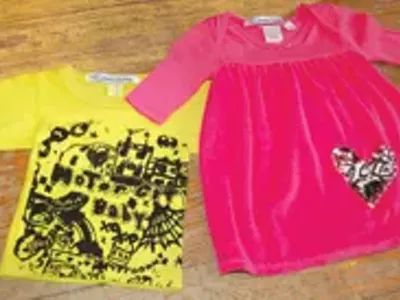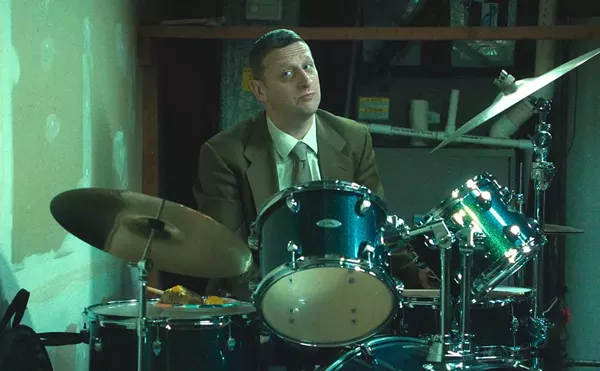
Audio By Carbonatix
[
{
"name": "GPT - Leaderboard - Inline - Content",
"component": "35519556",
"insertPoint": "5th",
"startingPoint": "3",
"requiredCountToDisplay": "3",
"maxInsertions": 100,
"adList": [
{
"adPreset": "LeaderboardInline"
}
]
}
]
Look at any picture taken outdoors in prewar America and you see hats. Shots of hat-wearing crowds can be terrifying evidence of the conformity that once permeated American society. At the turn of the last century, hats were so common that even a convict's mug shots would show him with and without his hat. Hats were ubiquitous enough to stake out a place in our language: We talk through our hats, eat our hats, throw our hats in the ring and go hat in hand. Your hat stood for who you were, and going bareheaded was once an alarming prospect that meant you had possibly gotten drunk or been mugged.
After the war, however, men started to hang up their hats in a big way. Soldiers back from the war locked their G.I. hats away in attic trunks. Hairstyles, more than hats, grew to define a man's look. Despite faddish revivals of some classic men's hats, by the 1970s America was well into the age of the baseball cap, and hats were something your mother hectored you into wearing. Brims gave way to bills, crowns and pinch-fronts sank away, and the stylish flourishes that once adorned men's heads became "old hat." Hat designers were older men out of touch with youthful styles. The death of mass transit and urban spaces coupled with the rise of the personal automobile and the climate-controlled shopping mall killed the hat's purpose: to shut out sun, rain and wind.
Several years ago, when a well-known hatter closed its doors in New York, the press took note. One commentator mourned the store's passing, noting that only a few hat shops remained in Manhattan. Perhaps the eulogy was premature. Hat sales are still fairly strong in New York, despite the shuttered shop. What's more surprising is that hat sales in Detroit are strong enough to support several hat emporiums.
Paul Wasserman of Henry the Hatter recalls the decline of the hat frankly: "Once upon a time," Wasserman says, "in Hudson's heyday, the hat department was 3,000 square feet. As times changed, the bottom-line people, as opposed to the style people, found that the profit was greater in such non-bulky commodities as jeans because you didn't need all that space."
As the business shrank, however, hatters have found their niche, and it's a surprising reversal. In the old days, hats defined your class, from the banker's homburg to the businessman's snap-brim fedora to the hourly worker's pie-shaped cap. Today, hats are a statement of individual style.
"It's more music-driven and entertainment-driven these days," Wasserman says. "When Brad Pitt or Alicia Keyes wear a hat, people get interested."
And, of course, African-American fashion never dropped hats the way white America did, a fact for which Wasserman is tactfully grateful. "That's why I'm in downtown and not in Birmingham. Trends come and go but [African-American customers] are the linchpin."
And stores catering to this loyal clientele have helped give Detroit a reputation as a fashion mecca. A glance at the hat cases in Wasserman's store or at Joe Porter's Menswear on Gratiot can look as vivid as a color swatch. In addition to the sober, dark homburgs, fedoras and trilbys, an astonishing array of colored hats glow behind the glass. One of the most popular hat lines is endorsed by TV funnyman and radio host Steve Harvey. His collection features such Dobbs hats as the "Avenue E," coming in bold, attention-getting colors. It's not enough to call them pink, green, blue, red and yellow; Wasserman's breathless catalog describes them as "pale pink, lime green, ice blue, raw red and butterscotch." Undoubtedly, the dramatic touch has some cache with Henry's clientele. Despite the modest-brimmed fur-felt porkpies and classic fedoras, the brims can shoot out several inches to gangster proportions, or curl up into an imperious banker's homburg. The effect is intentional, and the sales talk in the catalog states explicitly that the "wider brim profile will turn heads at any event. Now you can stop the show."
Whether you want to stop the show or merely shield out the sun, the new summer hats are now starting to appear on shelves, and are likely tending to the softer, crushable types, and Sinatra-type stingy-brim straws rather than panamas. Colors will remain strong, but softer, including beiges and grays, and creams, not whites. For anything but the cheapest headwear, buyers should be prepared to spend about $100 for a hat that will last many years. The more expensive designs, made with fur or beaver felt, can run up to several hundred dollars.
"All you need to know is what you like," Wasserman advises, "If you're buying your first hat, don't get something big and overpowering. Start smaller with something you can grow into.
"What I'm selling and promoting is fashion, not utilitarian," Wasserman says, before adding with a chuckle, "An ugly hat will keep you just as warm as a nice one."
Henry the Hatter
Detroit; 1307 Broadway; 313-962-0970
Hamtramck; 9307 Joseph Campau; 313-875-5587
Southfield; 15616 W. 10 Mile Rd.; 248-557-7770
Joe Porter's Menswear
2645 Gratiot Ave., Detroit; 313-568-2033





